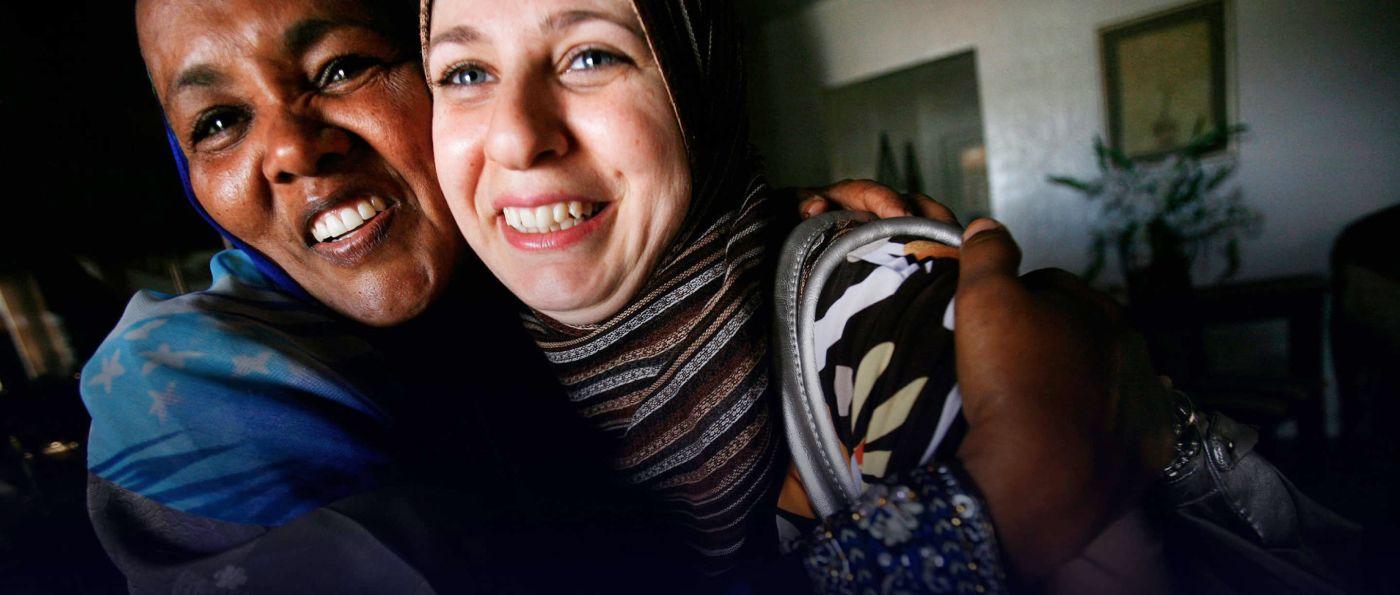Recent Policy news

NOVEMBER 2025
Policies that impact our welcoming community continue to change. Our latest analysis breaks down three recent policy updates and helps you understand why it matters for Welcomers, newcomers, and our communities.
1. The Trump administration is capping refugee admissions at 7,500 people.
What happened: On Oct. 31, President Trump released the refugee admissions cap, limiting entry to 7,500 refugees for the fiscal year 2026 (Oct. 1, 2025–Sept. 30, 2026). This safe and legal pathway, and the ceiling set by the president for the last 45 years, has allowed many Americans to offer safety and hope to newcomers fleeing danger, violence, and persecution.
Earlier news reports stated the president would issue the presidential determination after the government shutdown ended, and he could consult with Congress as required. Although there is ongoing disagreement about whether the official consultation occurred, the presidential determination finalizing the refugee admissions cap was issued on Oct. 31.
President Trump paused all refugee admissions in Jan. 2025 and said admissions would only be restarted if in the best interest of the U.S. He later allowed the resettlement of more than 100 Afrikaners from South Africa. While President Trump's determination on the refugee admissions cap does not provide details on refugee processing for those already in the U.S. Refugee Admissions Program (USRAP) pipeline, it said most of the refugees admitted will be Afrikaners from South Africa, “and other victims of illegal or unjust discrimination in their respective homelands.”
Why it matters: Each fall, the president determines how many refugees the United States will aim to welcome through USRAP in the coming year. The cap of 7,500 is a historic low in the program’s history and will delay thousands of families from reaching safety in the U.S.
2. The government shutdown will impact federal food assistance in November.
What happened: The ongoing government shutdown is impacting the Supplemental Nutrition Assistance Program (SNAP), and many of the 42 million people enrolled in SNAP did not receive benefits beginning on Nov. 1. However, two federal judges ruled over the weekend that the U.S. Department of Agriculture (USDA) must use its contingency funds to keep SNAP running.
Additionally, changes to SNAP eligibility made through H.R.1, often called the “big, beautiful bill," went into effect on Nov. 1. Many newcomers, including certain refugees, asylum seekers, and humanitarian parolees, will no longer be eligible for food assistance.
What it means: The impact of the shutdown and new eligibility rules from H.R.1 vary by state. The court rulings require the federal government to use emergency funds to deliver at least some SNAP payments for November, though the court gave the USDA discretion on whether to issue full or reduced benefits. Delays are still likely, as reloading SNAP cards can take time.
Some states, like New Mexico and New York, are stepping in with temporary state-funded food aid or emergency food bank support to bridge the gap. To get up-to-date information on SNAP benefits in your state, go directly to your state’s Department of Human Services (or equivalent) website. They may have a “shutdown update” or “SNAP news” section. Everyday Americans are also organizing across the country to help stave off food insecurity among their neighbors.
3. DHS ended the automatic extension of employment authorization.
What happened: As of Oct. 30, the Department of Homeland Security announced it will end the automatic extension of Employment Authorization Documents (EADs) for most newcomers who apply to renew them.
What it means: Before the new rule, EAD renewal applicants could continue working for up to 540 days after their old card expired while waiting for the new one to be approved. The automatic work authorization will no longer apply to renewal applications filed on or after Oct. 30. This change means many newcomers could experience gaps in their ability to work while waiting for the renewal to be processed.
This change impacts asylum seekers, refugees, and green card applicants. Temporary Protected Status (TPS) recipients may still receive limited automatic extensions, but these will be shorter and depend on specific government announcements related to each individual TPS designation. The change does not apply to newcomers who currently have an EAD through their humanitarian parole status, as their EADs were never eligible for automatic extensions.
Join our welcoming community
Sign up for updates about Welcome.US, policy changes impacting newcomers, and how you can get involved.


